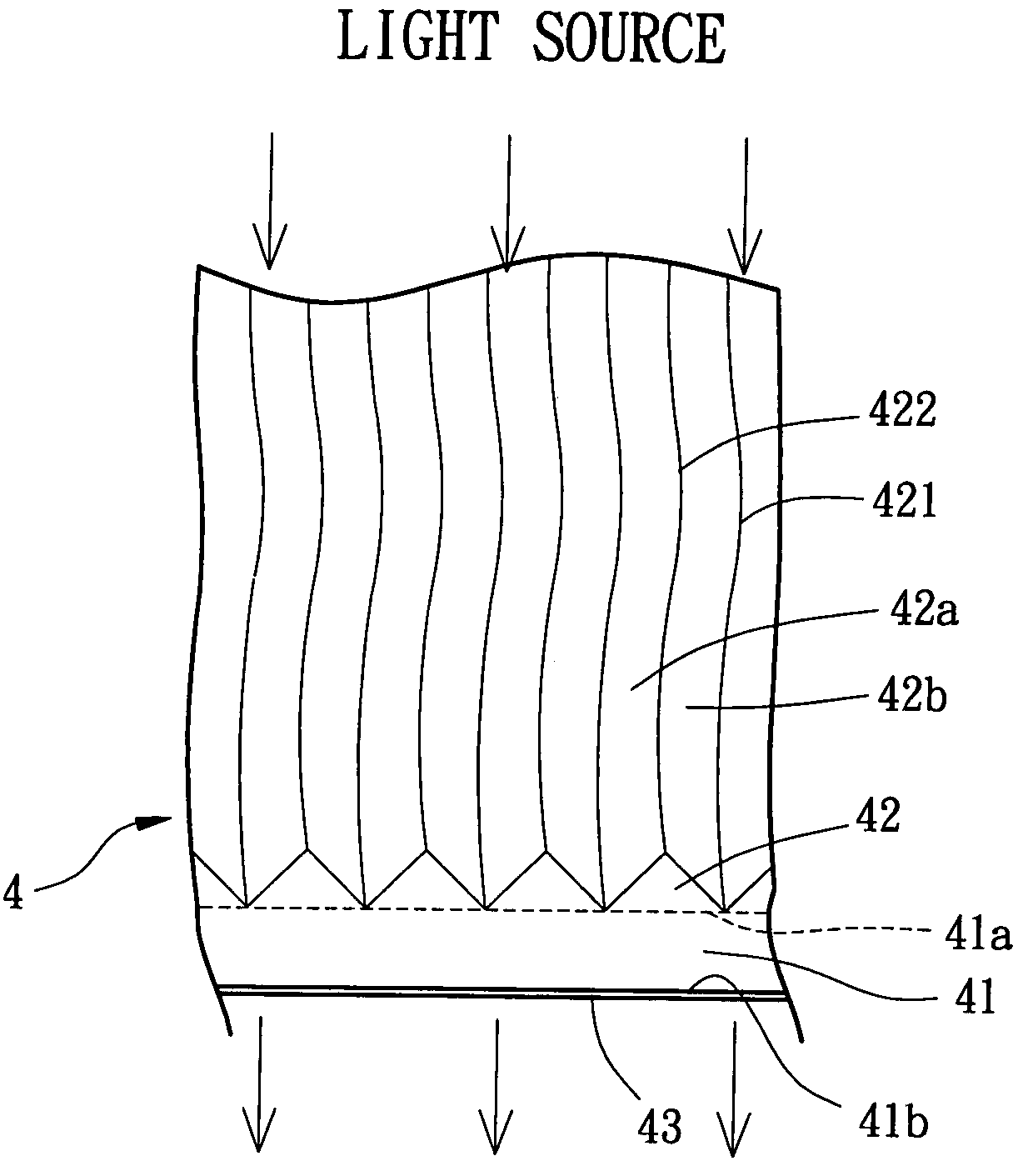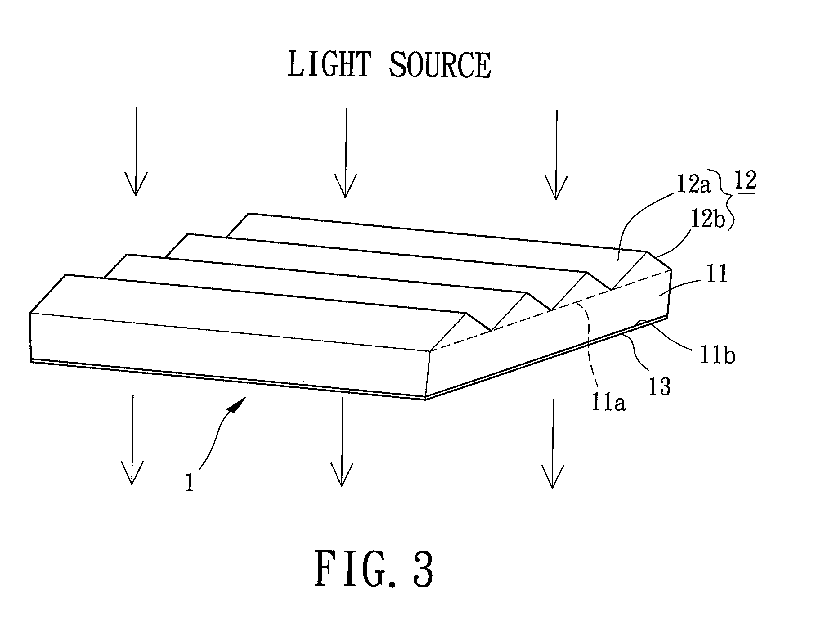Brightness enhancement film having a light-guiding structure
a technology of light-guiding structure and brightness enhancement film, which is applied in the direction of optical waveguide light guide, waveguide, instrument, etc., can solve the problem of specific degree of warpage of brightness enhancement film in nature, difficulty in reducing the thickness of the entire substrate of the brightness enhancement film, and the inability of the light emission surface of the substrate to generate homogeneous refracted ligh
- Summary
- Abstract
- Description
- Claims
- Application Information
AI Technical Summary
Benefits of technology
Problems solved by technology
Method used
Image
Examples
first embodiment
[0031]Referring initially to FIGS. 1 and 2, a brightness enhancement film 1 having a light-guiding structure in accordance with the present invention is a substrate constructed from a thin-sheet member. The substrate includes a light-guiding layer 11 and a plurality of prism units 12. Generally, the substrate has a light incident surface 11a (shown at a dotted line) at a first side of the light-guiding layer 11, and a light emission surface 11b at a second side of the light-guiding layer 11 which is opposite to the first side. The substrate is made from a transparent material to permit light to penetrate from the light incident surface 11a to the light emission surface 11b, and it can enhances brightness of light.
[0032]Still referring to FIGS. 1 and 2, a light-refracting microstructure layer of the brightness enhancement film 1 includes the prism units 12 provided with a light-refracting microstructure. The prism units 12 are arranged and juxtaposed on the light incident surface 11a...
second embodiment
[0038]Still referring to FIG. 3, the manufacture of the brightness enhancement film 1 in accordance with the present invention shall be described in detail. The arrangement of the first flat inclined surfaces 12a and the second flat inclined surfaces 12b of the prism units 12 can be varied according to the design need. Such practice may, however, cause spontaneous warpage of the light-guiding layer 11. The reinforcing layer 13 can perform a relatively high degree of hardness that may alleviate the possibility of occurring warpage of the brightness enhancement film 1. Consequently, the brightness enhancement film 1 has a high degree of warpage resistance. Furthermore, the hardness of the reinforcing layer 13 can protect the light emission surface 11b of the light-guiding layer 11 against abrasion and scraping. Consequently, the brightness enhancement film 1 can carry out a high degree of abrasion resistance.
[0039]Still referring to FIG. 3, in manufacture, the light incident surface 1...
PUM
| Property | Measurement | Unit |
|---|---|---|
| thickness | aaaaa | aaaaa |
| thickness | aaaaa | aaaaa |
| included angle | aaaaa | aaaaa |
Abstract
Description
Claims
Application Information
 Login to View More
Login to View More - R&D
- Intellectual Property
- Life Sciences
- Materials
- Tech Scout
- Unparalleled Data Quality
- Higher Quality Content
- 60% Fewer Hallucinations
Browse by: Latest US Patents, China's latest patents, Technical Efficacy Thesaurus, Application Domain, Technology Topic, Popular Technical Reports.
© 2025 PatSnap. All rights reserved.Legal|Privacy policy|Modern Slavery Act Transparency Statement|Sitemap|About US| Contact US: help@patsnap.com



